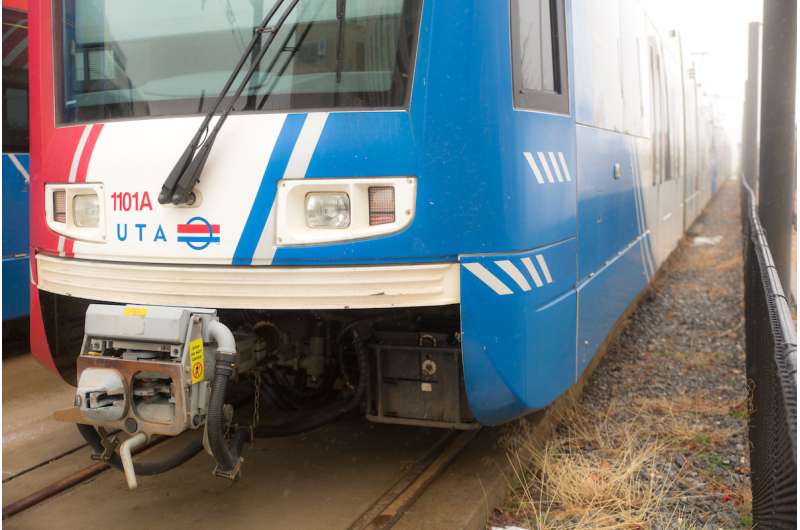Credit: University of Utah
For nearly 20 years, TRAX light rail trains have shuttled riders up and down the Salt Lake Valley, saving countless car trips and sparing Salt Lake's air tons upon tons of petroleum-powered pollutants.
And for the past four years the trains, operated by the Utah Transit Authority, have done even more for Utah's air: They've been air-sniffing sleuths, mapping out where and when different pollutants are present along the trains' route. University of Utah scientists recently published the findings of this study in Atmospheric Environment.
The TRAX project is the only known transit-based mobile air quality network in North America. Some results are unsurprising, such as spikes of carbon dioxide and nitrogen dioxide, byproducts of gasoline combustion, at street intersections. But the sensors also found methane emissions patterns that didn't correlate to daytime working hours, suggesting possible fugitive methane leaks.
"Our results suggest," the authors write, "air pollution and greenhouse gas emission monitoring and exposure assessment could be greatly enhanced by deploying instruments on public transit systems in urban centers worldwide."
More information: Logan E. Mitchell et al, Monitoring of greenhouse gases and pollutants across an urban area using a light-rail public transit platform, Atmospheric Environment (2018). DOI: 10.1016/j.atmosenv.2018.05.044
Journal information: Atmospheric Environment
Provided by University of Utah























